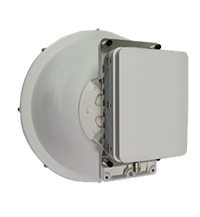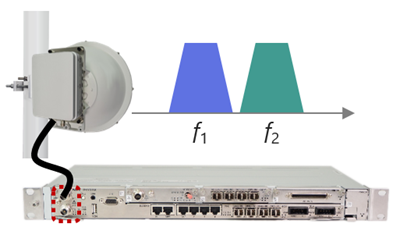Tokyo, Japan – NEC Corporation, a provider of wireless solutions, announced the global release of its iPASOLINK VR4 and IAP3 ODU variants supporting channel aggregation (CA) for telecommunications providers looking to cost effectively expand network capacity.

NEC’s iPASOLINK microwave radio products are well known and trusted for their reliability and performance by operators who require high availability and high-capacity operations across a wide range of network applications and environmental conditions. The iPASOLINK VR4 with MC-AVC now supports channel aggregation and allows operators to easily double the link capacity by simultaneously transmitting two radio channels via a single IAP3 ODU, without the need to add additional hardware.

NEC’s iPASOLINK IAP3 ODUs are deployed globally by operators looking for reliable radio links operating across the widest range of environmental conditions. The IAP3 ODU delivers high-power at high modulation, ensuring the best system gain for higher capacity links and a minimal lightweight body for easy mounting. The IAP3 ODU now also supports channel aggregation while IAP3 frequency bands are being rolled out sequentially.
The channel aggregation feature is licensed and enabled in software on the iPASOLINK VR4 with the new MC-AVC main card. A single IF cable connected between the iPASOLINK VR4 modem port and the IAP3 ODU enables operators to double the link capacity by simply adding a second radio channel. Operators gain increased capacity with less hardware and significantly reduce operating costs when compared to traditional 2+0 systems. In the near future, NEC will also add support for channel aggregation to the optional MODEM card, thereby extending channel aggregation support to the VR4 and VR10 plugin slots.

The iPASOLINK VR4 with MC-AVC also supports NEC’s multi-traffic aggregation (MTA) and radio traffic aggregation (RTA) features, as well as four 10Gbps SFP ethernet interfaces, redundant power supplies and is interoperable with other iPASOLINK products.
“NEC will continue to provide innovative products that meet the needs of our customers. An important factor in 5G network deployments, is to provide high-density, simple and fast transport,” says Yukio Hioki, general manager, wireless solutions division, NEC Corporation. “In addition, to aggregate radios of various bands and realise flexible channel arrangement, it is important that many band options are available and the optimum radio-head can be selected. NEC is pleased that this not only avoids excessive capital investment, but also reduces unnecessary waste, reduces the environmental burden, and contributes to the sustainable activities of our customers.”
Comment on this article below or via Twitter: @VanillaPlus OR @jcvplus”






